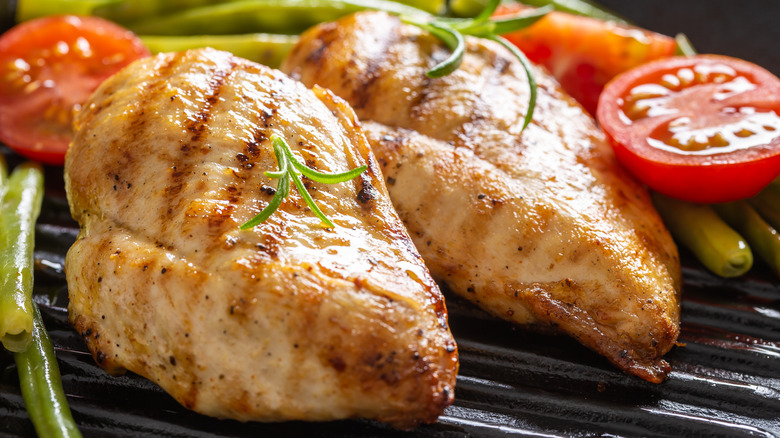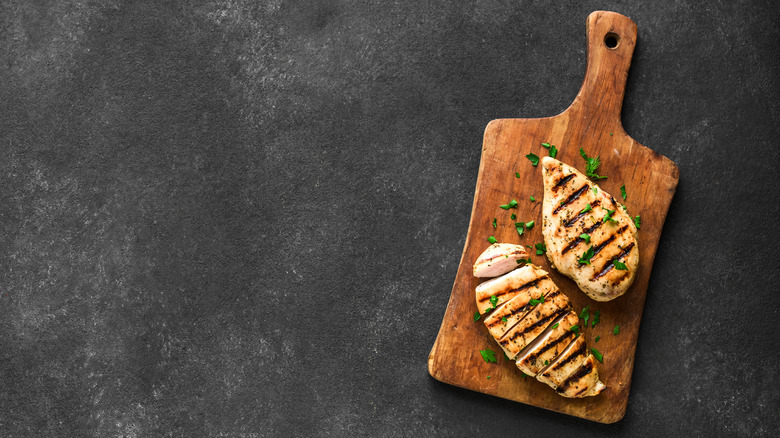How To Avoid Overcooking Lean Cuts Of Chicken
As versatile as chicken is, taking center stage in a roast chicken, adding a hint of protein to a spinach salad, and wafting its delicious aroma across the backyard when it's grilled, let's face it: This beloved protein can tend towards dryness. According to Eat This, Not That!, the cuts of chicken that are at most risk of drying out — no matter which cooking method you choose — are the breasts and tenders, which have very little fat. Without that insulating layer of fat, white meat chicken can go from just cooked to bone dry in what seems like the space of just a few minutes.
If you're used to chicken coming out a bit dry, there are a few methods you can try to keep it moister and juicier during cooking. Eat This, Not That! suggests brining whole chicken breasts in a salt and sugar brine with any herbs you like — a half hour is a good window for soaking, according to Kitchn — and then cutting the breast into evenly sized pieces that will all cook at the same rate. Both of these techniques will help the chicken stay tender as it cooks, but there's another important factor to consider when cooking chicken breasts, and that's carryover cooking.
Letting the chicken rest after cooking will bring it fully up to temperature
Have you ever heard of carryover cooking? If not, it's time to incorporate this important concept into your kitchen — especially when cooking lean cuts of chicken. According to Cook's Illustrated, carryover cooking refers to the phenomenon of meat continuing to cook after it is removed from a heat source. The outlet explains that as meat sits, the heat on its outside — which has been exposed to a more direct form of heat than the inside — will migrate into the cooler interior of the meat, raising the internal temperature a few more degrees even though the meat is no longer cooking.
As explained by The Spruce Eats, the idea of carryover cooking can become your new best friend when working with chicken breasts. While it's important not to undercook chicken, the outlet writes, there's no reason to totally overcook it either, and pulling the chicken from the heat source just as it's done and letting carryover cooking carry the internal temperature a few degrees higher is a super helpful way to ensure juicy chicken breasts, instead of tough, dry ones.
Letting a just-cooked chicken breast or tender rest a few minutes will allow carryover cooking to bring the meat fully up to temperature — ideally, an internal temp of 165 degrees Fahrenheit — and letting the meat rest will allow the fibers to better hold on to all their juices. By the time you cut into your chicken breast, it will be both perfectly cooked and it won't spill out all the moisture you worked hard to protect.

